My long-distance walks in the Netherlands are a curious blend of unfinished journeys. My trails crisscross the Netherlands; like spilled ink on the map, they form irregular lines that leave the question of their ultimate destination tantalizingly open.
Among these paths, the most renowned is the "Pieterpad," a 500-kilometer north-south journey from Pieterburen to the Sint-Pietersberg. I walked it decades ago, enjoying the diverse landscapes over several years of intermittent weekend walks. But the notion of completion is elusive, as the Pieterpad seamlessly connects to the European walking route Grande Route 5, meandering through the Ardennes and the French Alps before reaching Nice.
It's a tantalizing prospect for Dutch hikers, but I wonder where they will go once they arrive; maybe to Arles and start on the Camino de Santiago from there? Or why not go the other way and finish in Rome?
The lack of a clear destination -or purpose- makes a long-distance hike in the Netherlands different from a pilgrimage. You can set Rome, Jerusalem, or Santiago de Compostela as an acceptable end goal for religious, spiritual, or historical reasons. But the coastal path I followed two days ago ends officially in Sluis; add it to the other three, and you see what I mean. It somehow doesn't feel right to accept Sluis as a suitable destination.
In the past nine years, my somewhat nomadic existence has complicated the pursuit of full-length trails in the Netherlands. Balancing work, social commitments, and limited time has led me to start on two east-to-west routes, one huge circular route in the hilly Veluwe region and another further to the east. They are hundreds of kilometers long, leading me through unknown fields and villages. All of them are unfinished.
It was the coastal trail in the southwest, starting from my own doorstep, that I continued last weekend. I drove the part I had already walked in previous years; leaving my island, I passed over dams connecting islands like Neeltje Jans and Noord Beveland. Technically, they may not be actual islands anymore, thanks to bridges and dams, but their distinct landscapes, architecture, history, and traditions still capture you with an island-like charm.
I stopped at Walcheren, once an island and now part of a peninsula; it encapsulates the essence of Zeeland. Water surrounds it on nearly all sides, with wide beaches, wooded estates, rugged creeks, historic dikes, farming villages, and towns like Veere and Middelburg. The frozen scene in the opening photo shows you the start of my walk, where the beach, usually teeming with life, lay deserted in the icy grip of January.
The Veerse Gatdam, the dam leading to Walcheren, offers a historical connection. Named after the nearby town of Veere, it changed the open connection between the eastern waters between the islands and the North Sea when it created the secluded Veerse Meer in 1961. It is a beautiful place for sailors, surfers, and water skiers.
The dam protects the Zeeland coastline against high tides from the sea. The Veerse Gatdam is packed with sand and planted with plants on both sides. This makes the dam resemble a dune area so integrated into the landscape that you can only see by bike or on foot that it is a dam with water on both sides. It is historically interesting since it was the first time the Dutch experimented with additional recreational functions, such as beaches, dunes, and cycle paths, to integrate the dam into the environment.
Part of the joy of walking is slowly seeing the landscape transition, like this area that I passed early in my walk. I took the photo as an example of the beauty of the landscapes in Zeeland. Willows in the foreground and a typical wetland mixture of water and land. There is always the feeling of wide open spaces, a luxury in the densely populated Netherlands.
I arrived at the broad, cold beach, refreshing my body and mind. When walking down, one of you was so kind to send me a coffee, which I enjoyed in the only beach cafe open this season.
Many long-distance walking routes in Europe use these kinds of white-red markers. I have seen thousands during my walks, but this is the first one I ever noticed on the beach. Even in January, the shoreline wasn't deserted, with a handful of people sharing the space on that chilly Saturday afternoon.
I love the warm light shining through this razor clam, Ensis. Their nickname leaves little to the imagination. They look like an old-fashioned cut-throat razor. We have loads of them on the Zeeland beaches. They are much more fragile than most other shells, but this was the first time I noticed how their thin structure beautifies them in the setting sun.
I like this photo because of its composition but also the rarity of this sight. Since it was freezing enough to even freeze the salty sea water, this white line marks the extent of the high tide, emphasizing the vastness of the island's beaches.
After my coffee stop, I walked back through the dunes and noted the flowering common gorse, providing a burst of color in the January landscape. I love to see its flowers blooming so early. This is one of those plants where you may notice some flowers all year round until they explode into a yellow feast in springtime.
It was now only blooming on some plants facing the southeast, likely a trade-off between the warm morning sunlight from the east and a bit of protection by the other shrubs from the winds coming from the southwest. The common gorse is native to the Netherlands, but you can find it worldwide, often as an invasive species that outcompetes native species.
When I reached the road after about two hours, I found out that the bus stop indicated on the map didn't exist. So I walked back to my car along a long local road. Watching over my shoulder the sun setting down. I added only seven kilometers to the long-distance walk along the coast; the steps back to the car remained uncounted.
With each step, my long-distance walks become a more complex structure of lines on the map, representing unfolding landscapes, unexpected encounters, and the joy of discovering the beauty hidden in the ordinary.
Looking over my shoulder, I saw the sun dipping below the horizon just before arriving at my parked car. A moment to realize that, like the trails I tread, the stories of my walks are as much about the journey as they are about the destination.
I write this newsletter because I believe we can do better on this beautiful but fragile planet if we work together.
You can subscribe for free to receive this newsletter in your email, but please consider supporting this initiative by paying for a subscription. The paying subscribers make it possible for those who can't afford it to read for free.





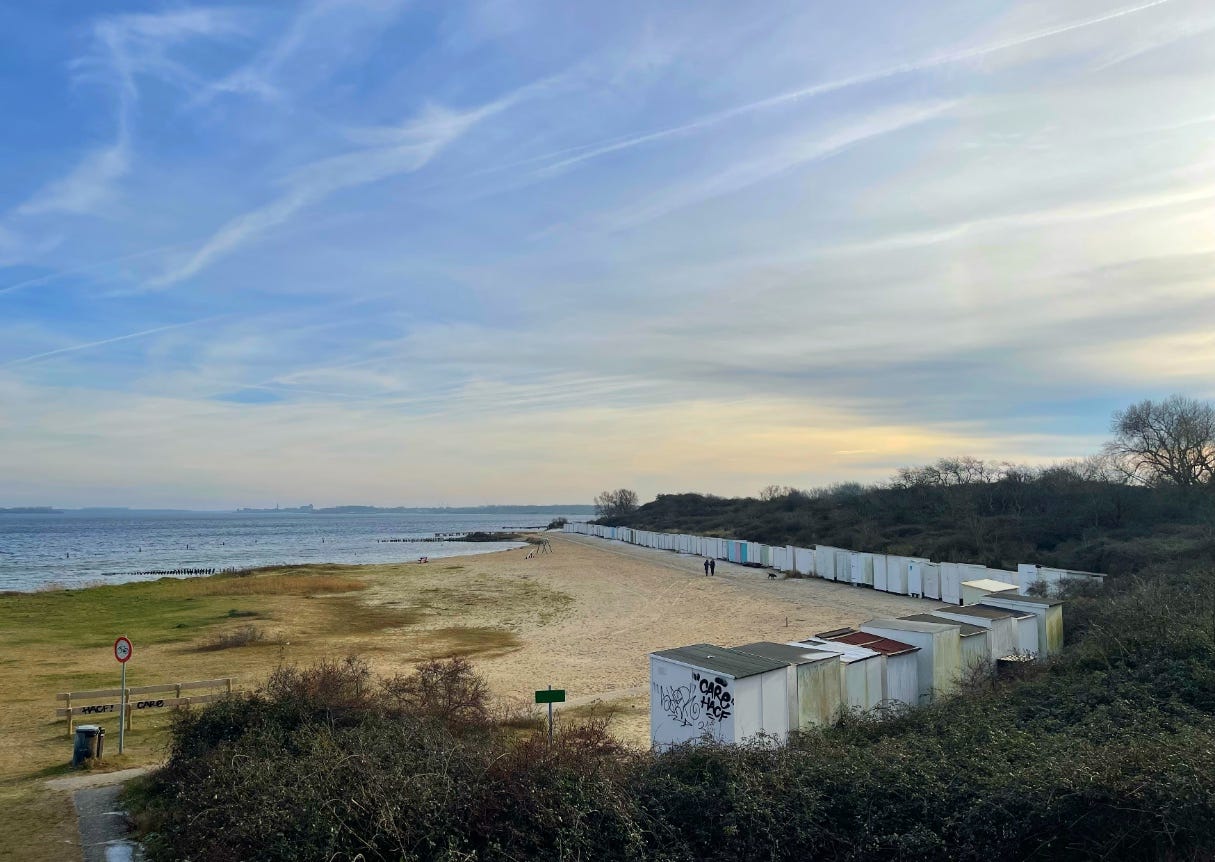
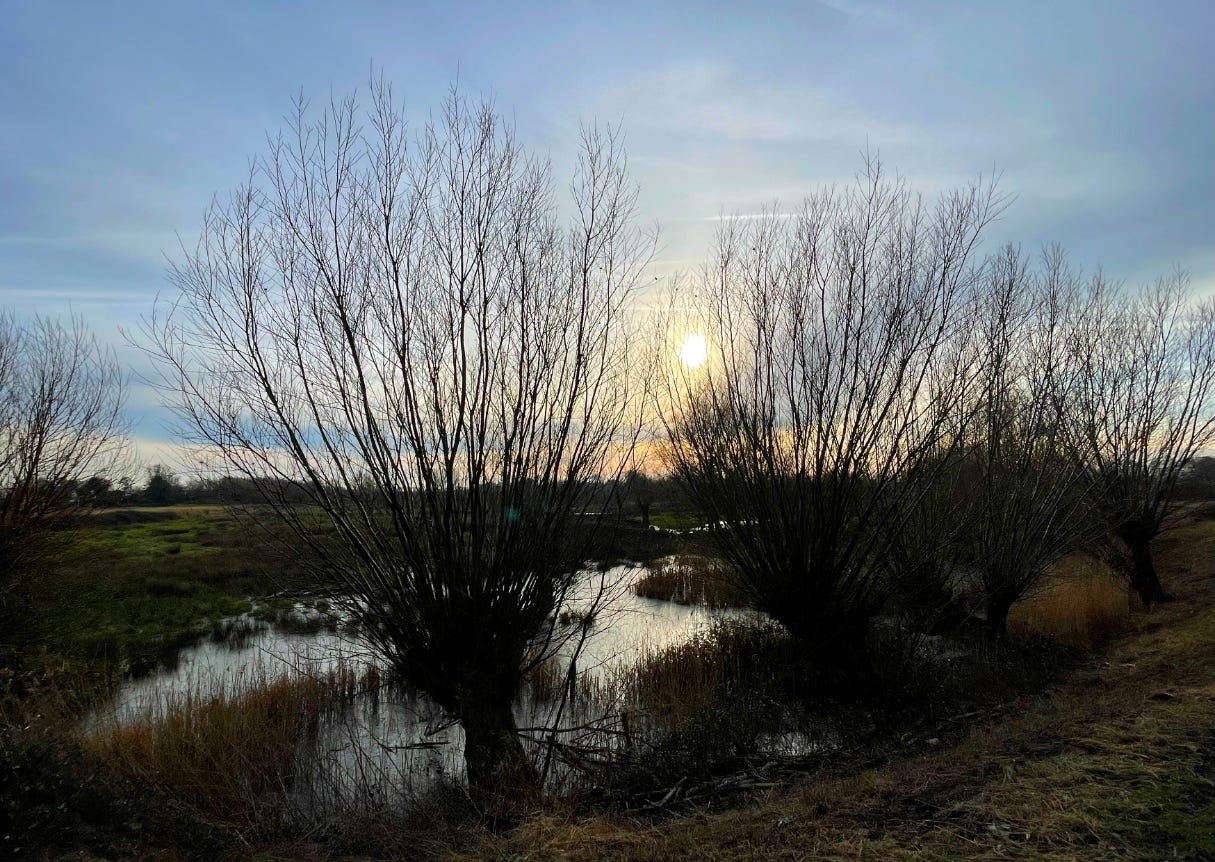
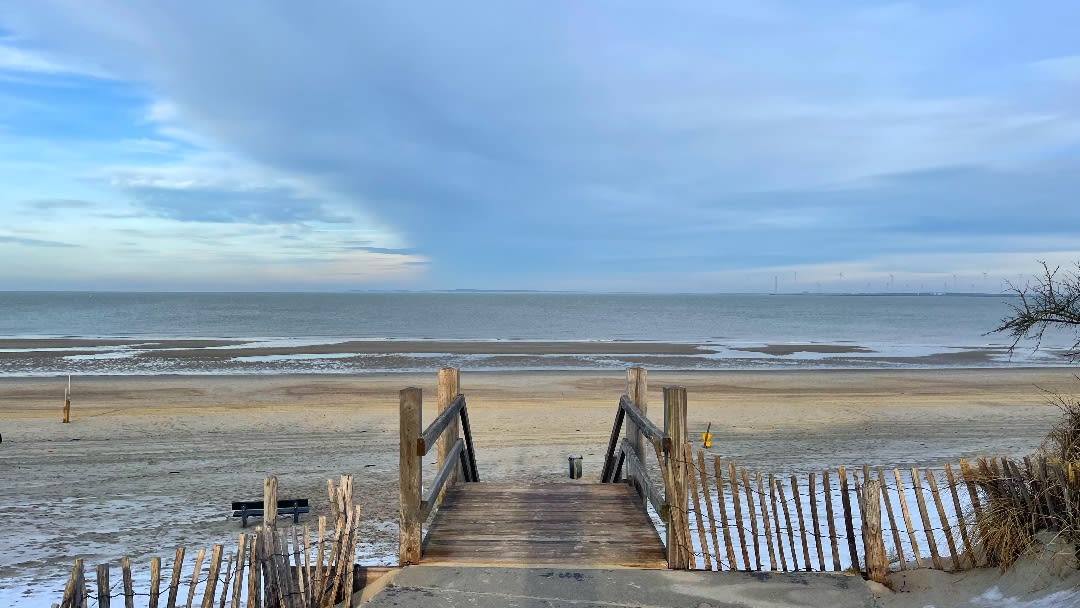
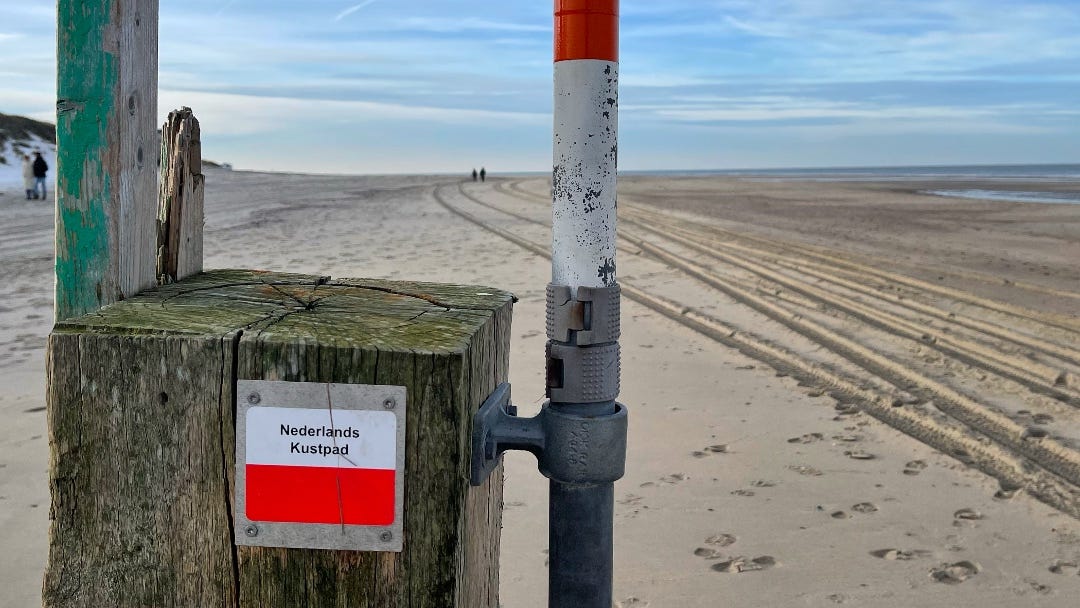

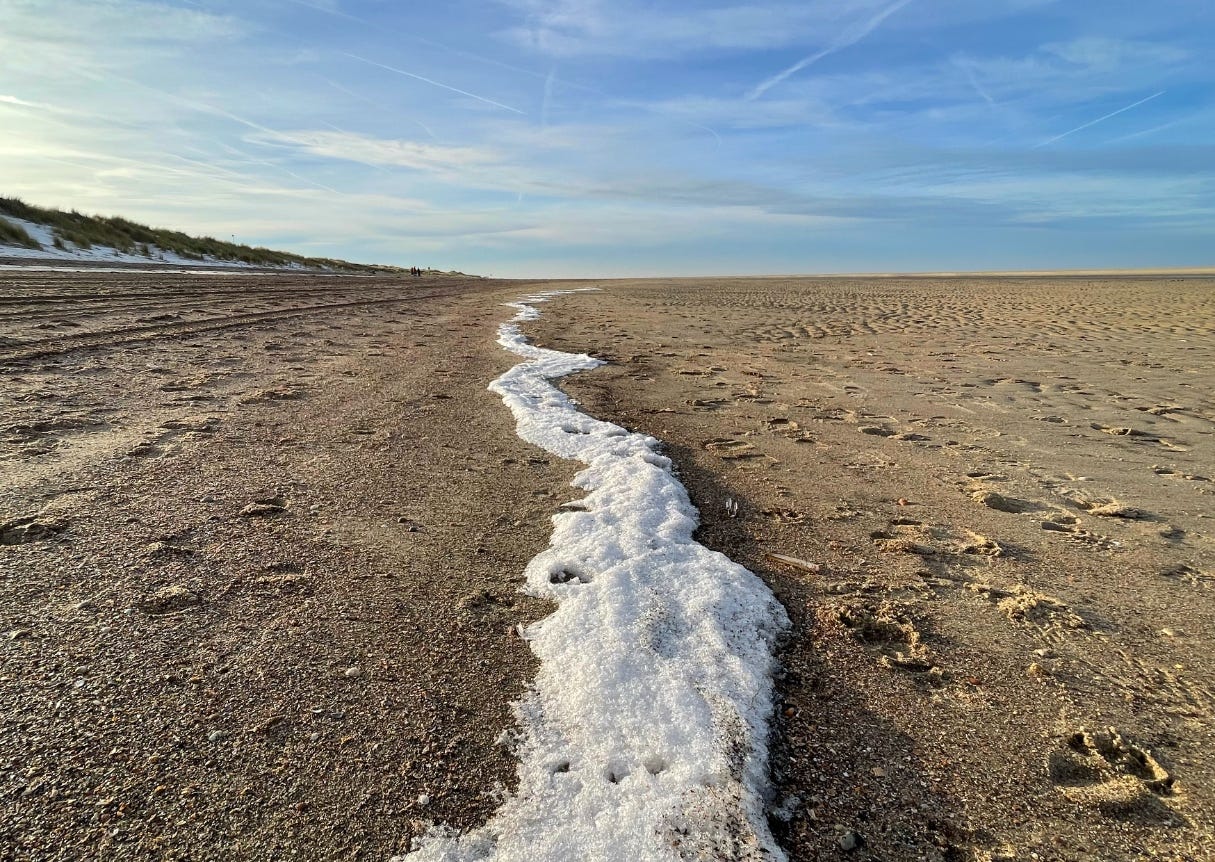
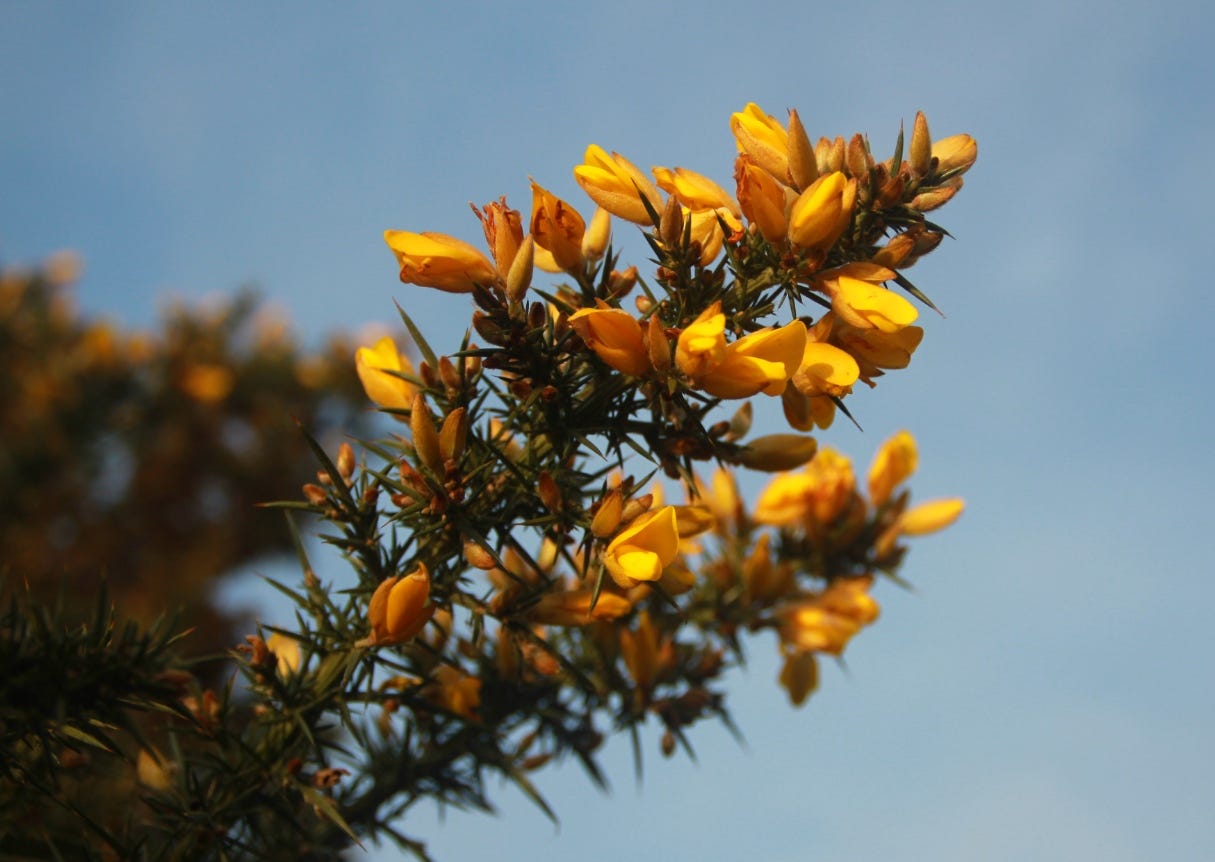
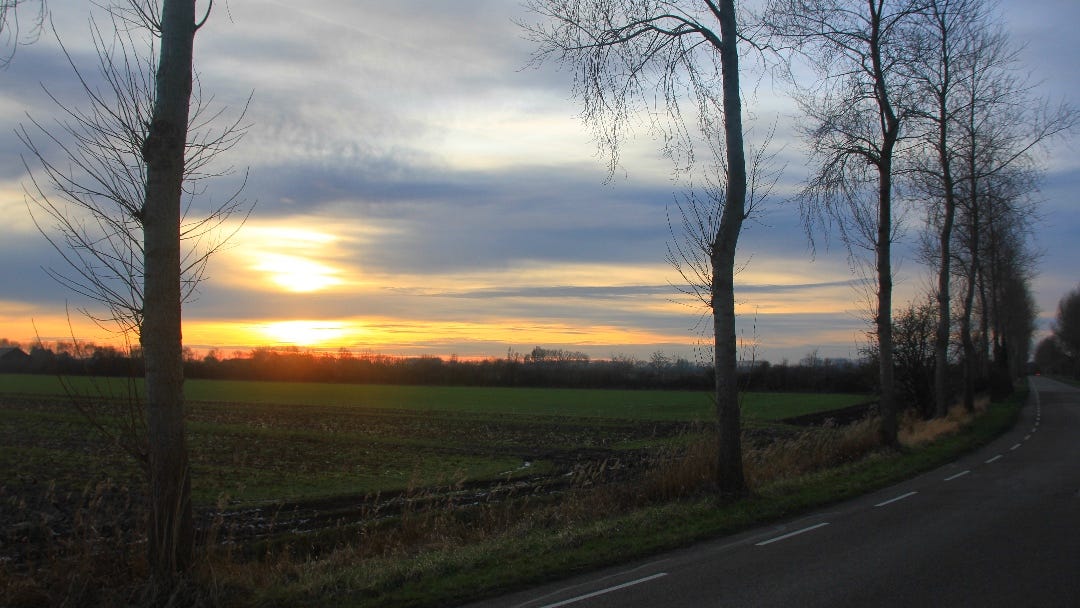
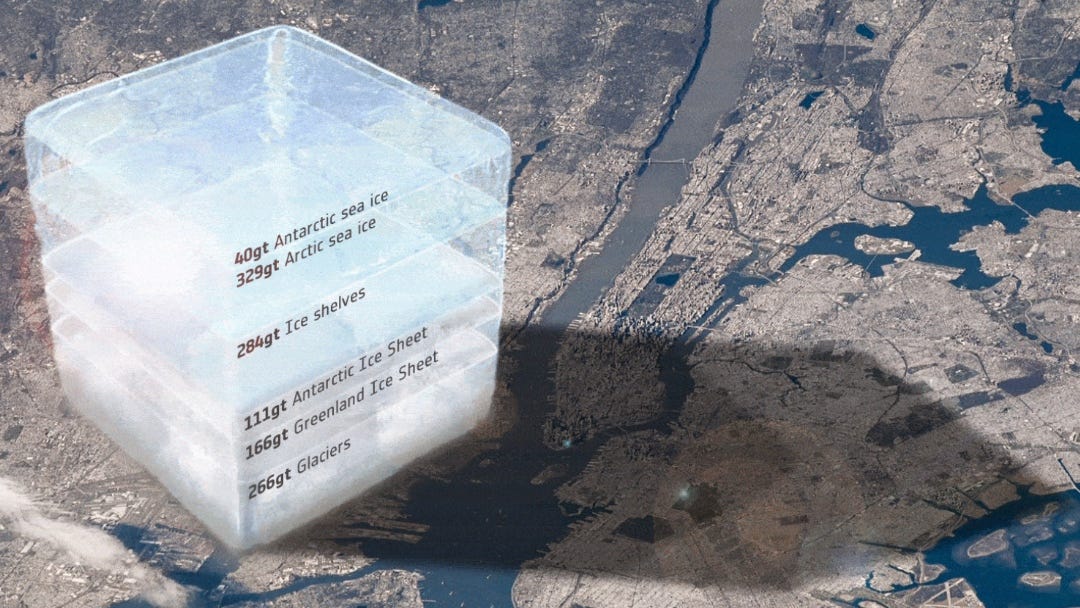

What a lovely reverie of a refreshing winter walk!
Even in bleak winter you find exquisite beauty of a different sort in your magnificent home country.
As a true Dutch son who knows his country from every aspect, as a seasoned walker, hiker, journeyer and lover of nature, as a skilled geographer, you are well positioned to sing the praises and attributes of this unique country. You do it justice.
So descriptive in details and preserved in gorgeous images, your subject shines in your capable hands. You even found budding blossoms!
The photo of frozen sea water is fabulous and I always love those Dutch sunsets.
Thank you for this wonderful article and extraordinary walk. I needed this today.
I don't know if it was my own unfinished (hiking) journeys and yet to be told stories, your beautiful pictures or how wonderfully this was written; whatever it was, this one touched me. Thank you.